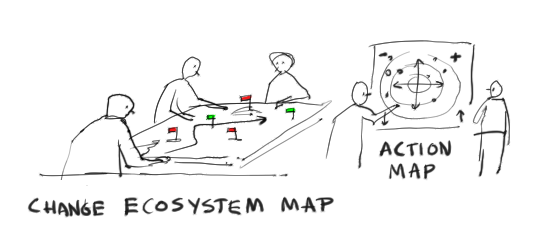Depending on whom you ask, 60–70 percent of change initiatives fail to meet their stated objectives, and the primary source of that failure, according to a Deloitte study, is resistance to change. So if you’re embarking on a change initiative, the last things you want to skimp on are risk-awareness and risk management.
Why should I care about Culture Mapping?
If you have an important change initiative you should do a Culture Mapping scan. It reduces risk and increases your chances of success.

Think of it this way. Imagine that your change initiative is a large fleet of ships that is about to go into a relatively uncharted waters (your company culture). You would be stupid to just take the ship into the harbor without some advance scouting.
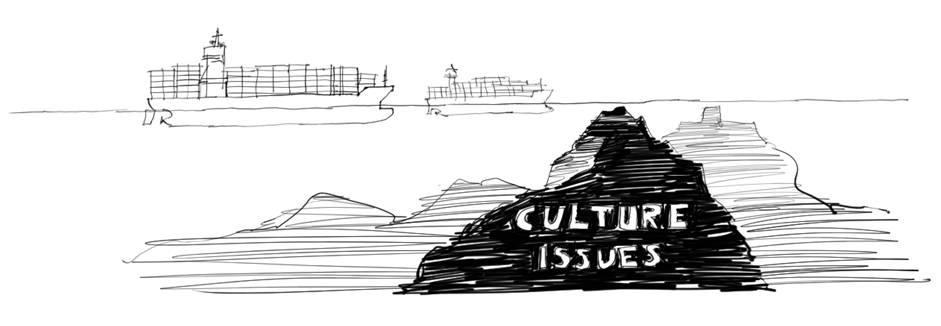
Culture Mapping is like sending in a team with a fast, motorized rubber raft, to scope out the harbor and plant big red flags to mark the rocks under the surface. To find the deep water and favorable currents. To scope out hostile and friendly forces. To map the territory, so you can navigate the safer waters and give your larger mission the best possible chances for success.

Even a brief, one-week Culture Mapping scan will give you enough information to avoid costly mistakes and find the positive enablers that can help you position your initiative for maximum success and to minimize risk.
Most importantly, Culture Mapping works. It surfaces information that, as far as we know, cannot be collected any other way. It gives the C-suite access to frontline culture in a way that they could never get through their own efforts, because the water-cooler conversation always shuts down, or significantly shifts, when the CEO or senior leader walks by.
How does it work?
First, you work with a Culture Mapping team to identify the groups that can best represent the various subcultures in your organization. For example, Finance, Sales, Wholesale Group, Retail Group, Operations, Logistics, IT, and so on. Working together, we identify 5–6 people from each group.
The Culture Mapping team schedules a series of 90-minute sessions, one session with each group. It’s important that these groups are teams that know each other and work together on a regular basis. In other words, we want to sit down with 5–6 people in finance and only those people. Then we might have another session with 5–6 people in sales, and so on. We want to do these sessions separately.
The thinking behind this is that we want people to share real information—in a sense this is a constructive complaining and designing session. No, the boss cannot come. These meetings are with the teams and not the bosses. The purpose of these meetings is to understand the cultural blockers and enablers which often being reinforced, intentionally or unintentionally, by management.
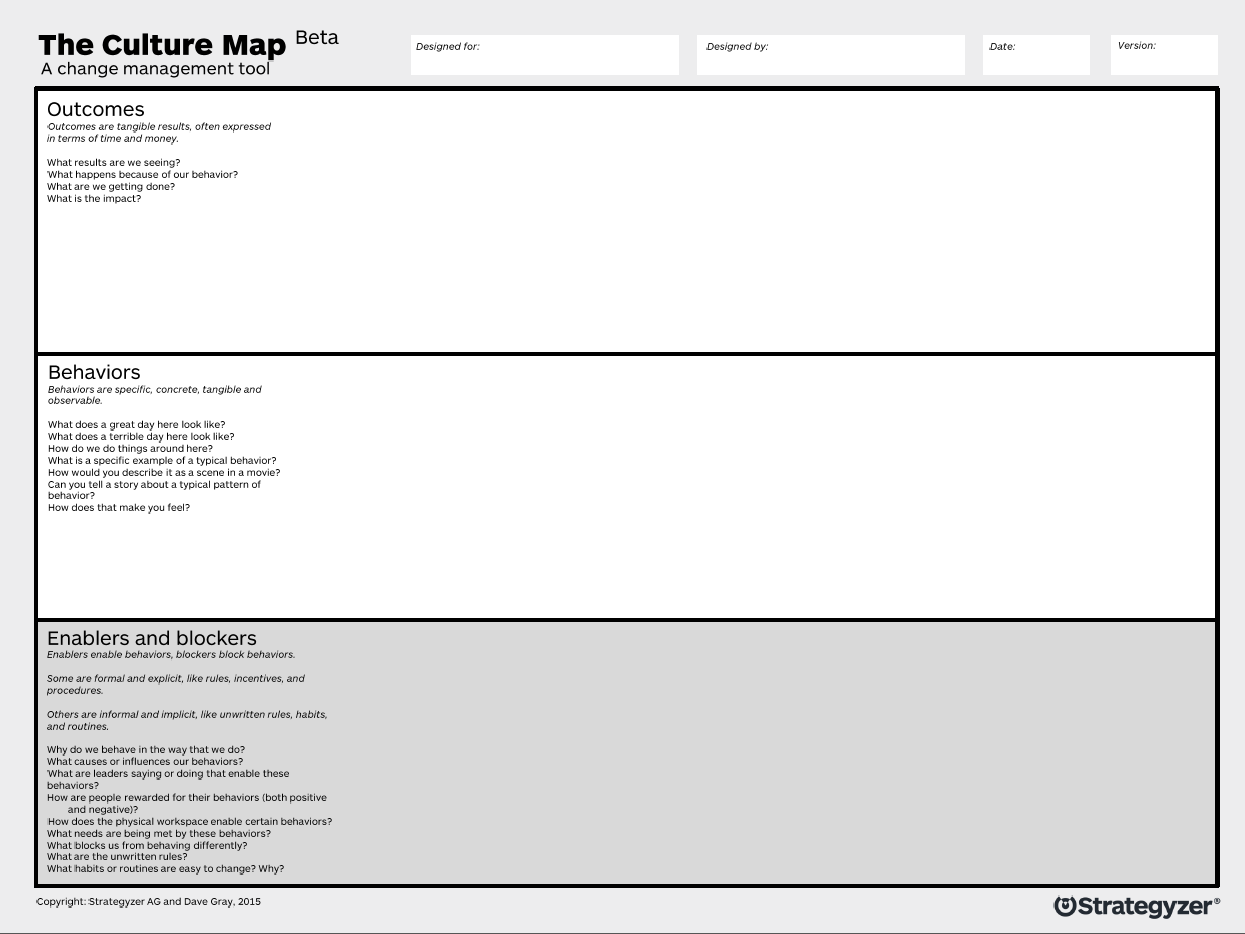
The output of each session is a simple document that describes the current and desired outcomes, behaviors, enablers and blockers for that particular group.
The sessions provide clear links between management actions, incentives and business structures and business results. They also provide recommended management actions and clear reasons and linkages that demonstrate why these actions will be likely to deliver the desired results.

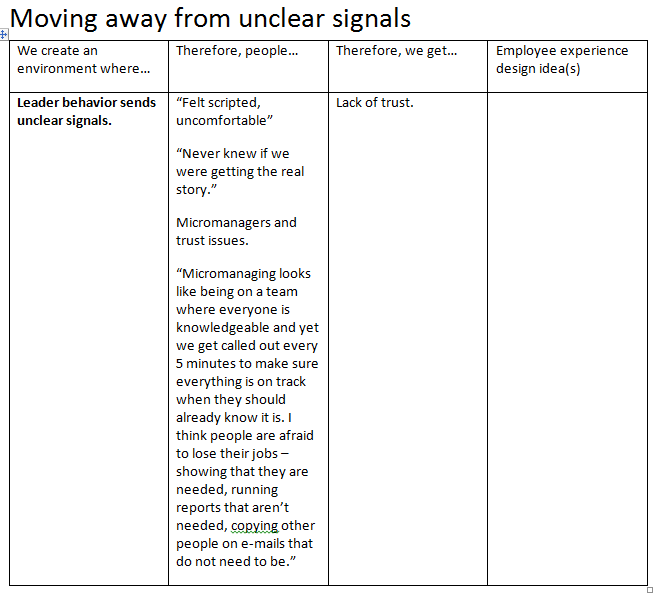
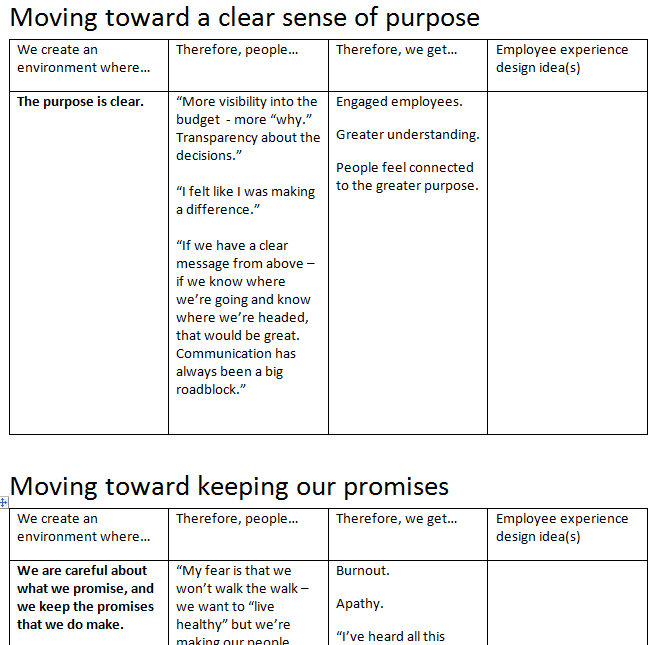
Sample outputs. High-level summary (left) and drill-downs with observations and verbatim quotes from the front line.
Why can’t I do this myself?
Ironically, people will often be more honest with a complete stranger than their boss, or someone they feel might have a personal or political interest in the outcome of Culture Mapping sessions.
- An outside team provides a neutral perspective. We are coming from outside the organization and are not personally vested in anything other than helping the organization be successful in the change.
- That means, we can ask “dumb questions.”
- We provide a degree of trust and anonymity. We tell people that, although we are ethically bound to report things that are illegal, aside from those kinds of things, we are interested to hear anything that people can tell us about what is blocking them from being successful and how the organization can create an environment that will support people and get them excited to exhibit the desired behaviors. We tell people that we may use their exact quotes, but we will not attach them to specific people. They will be rolled up into a report for leaders.
- We make no promises. We tell people that we are asking for their help in designing the organization they want to work in, and that we will be presenting these to management as a set of recommendations, but that it will be up to management to decide what to implement (or not).
What you get:
As a leader or manager in a large organization, you probably have a sense of the culture and people challenges facing you, but at the same time, you must also manage not only down but up and across the organization.
Culture Mapping gives you the intelligent information you require to make a business case for the interventions, executive support, and budget you will need to minimize risk and maximize the chances of success for your change initiative.
“Now we know not only where we want to go, but what resources we will need and how to get there.”

